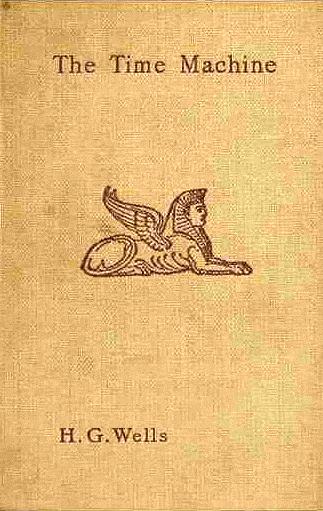Nineteenth book reviewed as part of the 130 Challenge.
When I started this book, I thought that I might have started a complicated story that would involve wrapping my head around complex ideas of multiple dimensions and the paradox of time travel. I have never been good at visualizing the fourth dimension in my head and whenever I have tried to grasp the concept of time travel, I’ve been discombobulated (what a word!) by it and have given up immediately. The closest I came to understanding time travel, was when J. K. Rowling explains it in the Prisoner of Azkaban. But even that had left me with a lot of questions that befuddled me. So I was preparing myself for a similar struggle as I took up this classic.
But that is not the case at all with this story. H. G. Wells, understanding the plight of someone who is suddenly thrust into the world of the paradoxes of time travel and the mind-boggling universe of multiple dimensions, starts the story with a brief but convincing explanation of how time travel might work. He begins with an explanation of how time is actually the fourth dimension and that it can be traversed just like any other dimension in space. In fact, he says that time is also a kind of space.
Sure, the explanation is not fool-proof and it may even seem counter-intuitive. But this is science fiction, after all and this simple explanation is what makes his story work. After this brief description, he doesn’t even try to go into the specifics of time travel, as he understands that that is not his domain. After introducing the reader to the loose concept, he takes off on a flight of fantasy into the future and paints a picture that one wouldn’t expect from a novel about the future.

You might be wondering what the Sphinx is doing on the cover of a Science Fiction book. But it has an important role to play. And don’t you just love this minimalistic cover?
The story is narrated by an inventor who travels into the future and comes back to relate his incredible story to his peers. It is much like the stories of Sindbad the Sailor, the only difference being that the traveler in this case travels to strange times instead of strange, hitherto unknown lands. The story is simple and gripping and just like all stories of exploration, it is filled with wonder and deep reflections on the nature of life and existence. In fact, the story actually opens with the time traveler questioning the very notion of finite existence and then going on to explain the necessity of it.
The story is wonderful and grim. It is at once a confirmation of the spirit of triumph and discovery that propels our civilization towards the future and of all our worst fears about the transitory nature of existence and the inevitable end of the world. But even though he makes this prophecy, H.G. Wells wraps it up in the reassuring realization that despite all our shortcomings, we as humans will hold on to our humanity and that alone will see us through.
A definite must read for all. Check out the excerpts (there might be some spoilers so tread carefully)
This is one of those books that was “recommended reading” in school. I was probably the only one reading it then, and boy was it wow!
Though I am curious, what befuddles you in Azkaban? ;)
LikeLike
The whole time travel thing to save buckbeak.
LikeLiked by 1 person
Do not consider the book alone, if you see it with the movie, you picturise it well. The only confusing part is the need to enter the wolf call in the movie, because there is a way around it in the book. They hide behind the cabin, and Lupin the werewolf is taken away by Sirius anyway.
It’s complicated I agree, but the easiest time loop I have read. However, as a plot device, I abhor time travel, because then, none of it matters. All history can be changed, everyone can be saved from dying. -_- Existential crisis.
LikeLike
Arre that’s what I said. I did get it, but even that wasn’t flawless. It left me with a lot of questions.
LikeLike
Ok. You found loopholes is different from you didn’t understand it at all!
LikeLike
Uff..
How does this translate to ‘I did not understand it at all’?
LikeLike
Befuddle! It’s confusing to the extent that you’re lost!
LikeLike
It was the questions that befuddled me. Not the plot. Sigh.
LikeLiked by 1 person
Ok.
LikeLike
Ok.
LikeLike
“complex ideas of multiple dimensions and the paradox of time travel” — no, remember, this is PRE-EINSTEIN where much more complicated notions were developed ;)
LikeLike
Indeed. That why it is so amazing to see how well he has done with these concepts even though they were just in their infancy. He was far ahead of his time.
LikeLike
I think his story is very well told but I’m not convinced the content is anyway revolutionary. There are plenty of Victorian time travel narratives — you’ll need to provide evidence for “revolutionary content.”
LikeLiked by 1 person
Yes. Maybe I spoke too soon.
LikeLike
The SF encyclopedia is always a nice place to start.
http://www.sf-encyclopedia.com/entry/time_travel
“The idea of employing a hypothetical Time Machine as a literary device, using a jargon of apology to add plausibility, was not entirely new – having been preceded by Enrique Gaspar’s “El anachronópete” (in Novelas, coll 1887; trans as The Time Ship: A Chrononautical Journey 2012) – but this particular deployment of it was so striking as to constitute a historical break and a great inspiration.”
So yes, the book was influential but it was not the first deployment of time travel device.
LikeLiked by 1 person